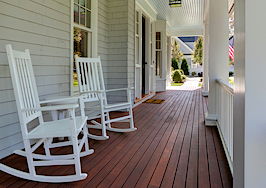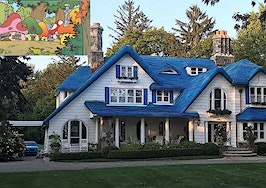One of the most iconic buildings in Toyko’s skyline is only a few weeks from demolition, according to reports by The Associated Press, CNN, Dezeen, The Real Deal and several other publications.
Designed by late Japanese architect Kisho Kurokawa in 1972, The Nakagin Capsule Tower is comprised of 140, 108-square-foot metal capsules split across two asymmetrical towers.
For decades, Nakagin was the “it place” for young professionals in the Ginza district to work and live, as each capsule was outfitted with built-in storage and appliances and a single, circular window that gave the building its iconic look.
“The view from that round window felt so good,” Nakagin Capsule Tower Building Preservation and Regeneration Project Leader Tatsuyuki Maeda told the AP. “At night, when cars sped by, their lights on the nearby freeway were pretty. And the cityscape was beautiful.”
“Japan does not have the legislation to preserve this kind of architectural culture,” Maeda added in a subsequent interview with CNN. “It is unfortunate that one of the country’s most representative examples of modern architectural heritage will be lost.”

Filmmaker Masa Yoshikawa works in his room in Nakagin Capsule Tower on Dec. 7, 2021. | Photo by Carl Court/Getty Images
The building started falling into disrepair roughly 25 years ago when the owners couldn’t keep up with Kurokawa’s intended maintenance schedule, which suggested the metal capsules be repaired or completely replaced every 25 years.
As a result of worsening conditions, TRD said occupancy rates in the building dropped down to 30 residents in recent years. The owner’s association attempted to sell the building to a developer in 2007; however, the global recession thwarted the deal and gave preservationists hope the building could be restored to its former glory.
Nakagin Capsule Tower Building Preservation and Regeneration Project members then lobbied with the local government to save the building, applied for protected status with the United Nations Educational, Scientific and Cultural Organization (UNESCO), and launched a $24 million renovation fundraiser, but each effort failed.
Last year, members gave up on saving the building and found a buyer who agreed to preserve a handful of the remaining capsules for museums and other architectural institutions to keep some of Kurokawa’s legacy alive.
Maeda said 80 institutions have expressed interest in owning a capsule including Paris’ Centre Pompidou and Saitama, Japan’s The Museum of Modern Art. Kurokawa’s architecture firm, which continued operating after his death in 2007, also announced plans to create a “digital space” for the building.
“We are determined to preserve the capsules, even if the building is demolished,” he said. “Dozens of capsules with relatively little aging will be recovered and rehabilitated.”
He added, “There is no doubt that the building was famous, but the Capsule Tower also had a certain charm that appealed to people. Everyone who stayed there was creative in his or her own way, and the community that formed was truly fascinating. I am sad to see it go, but I hope it will live on in a new form.”













